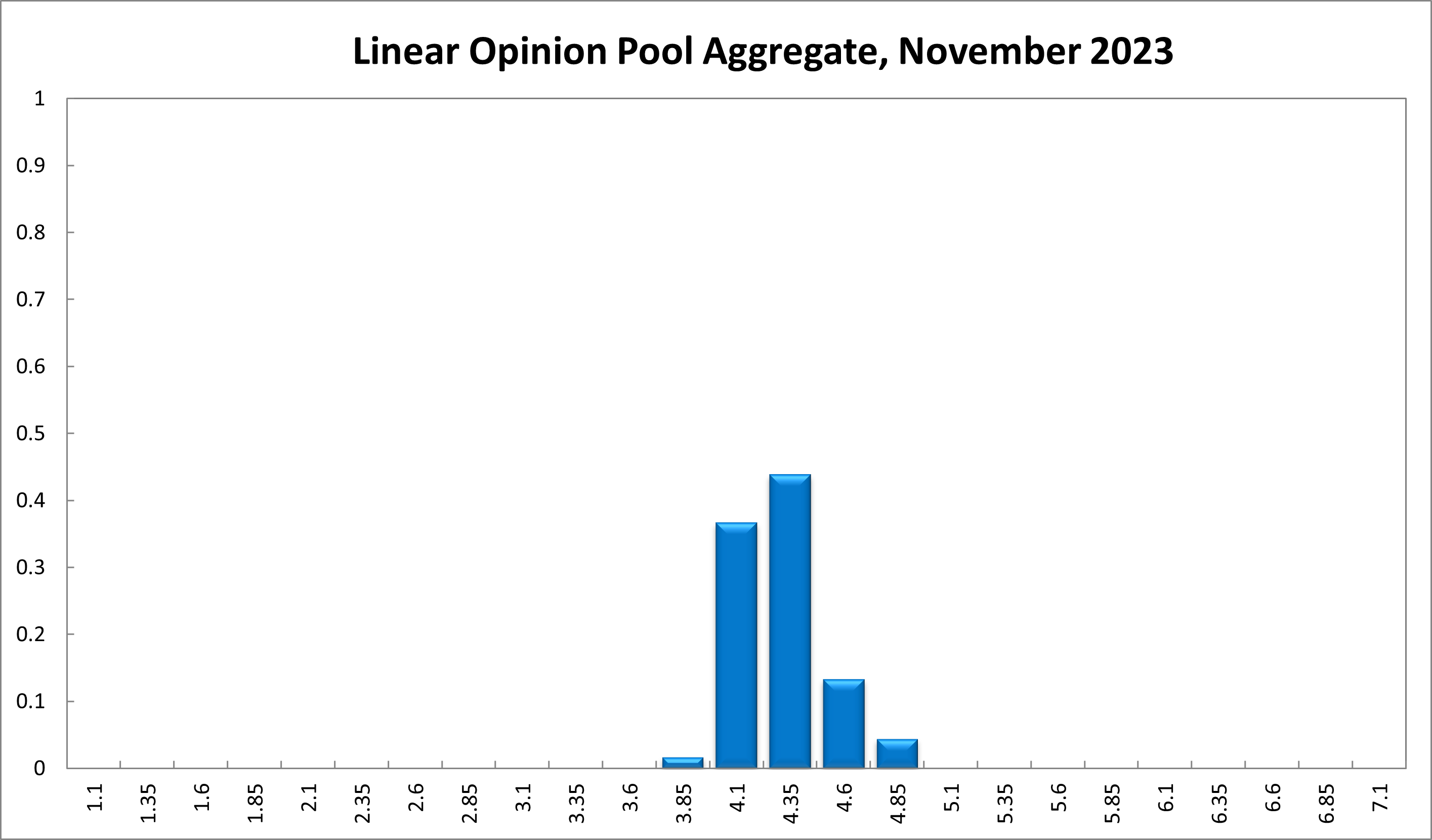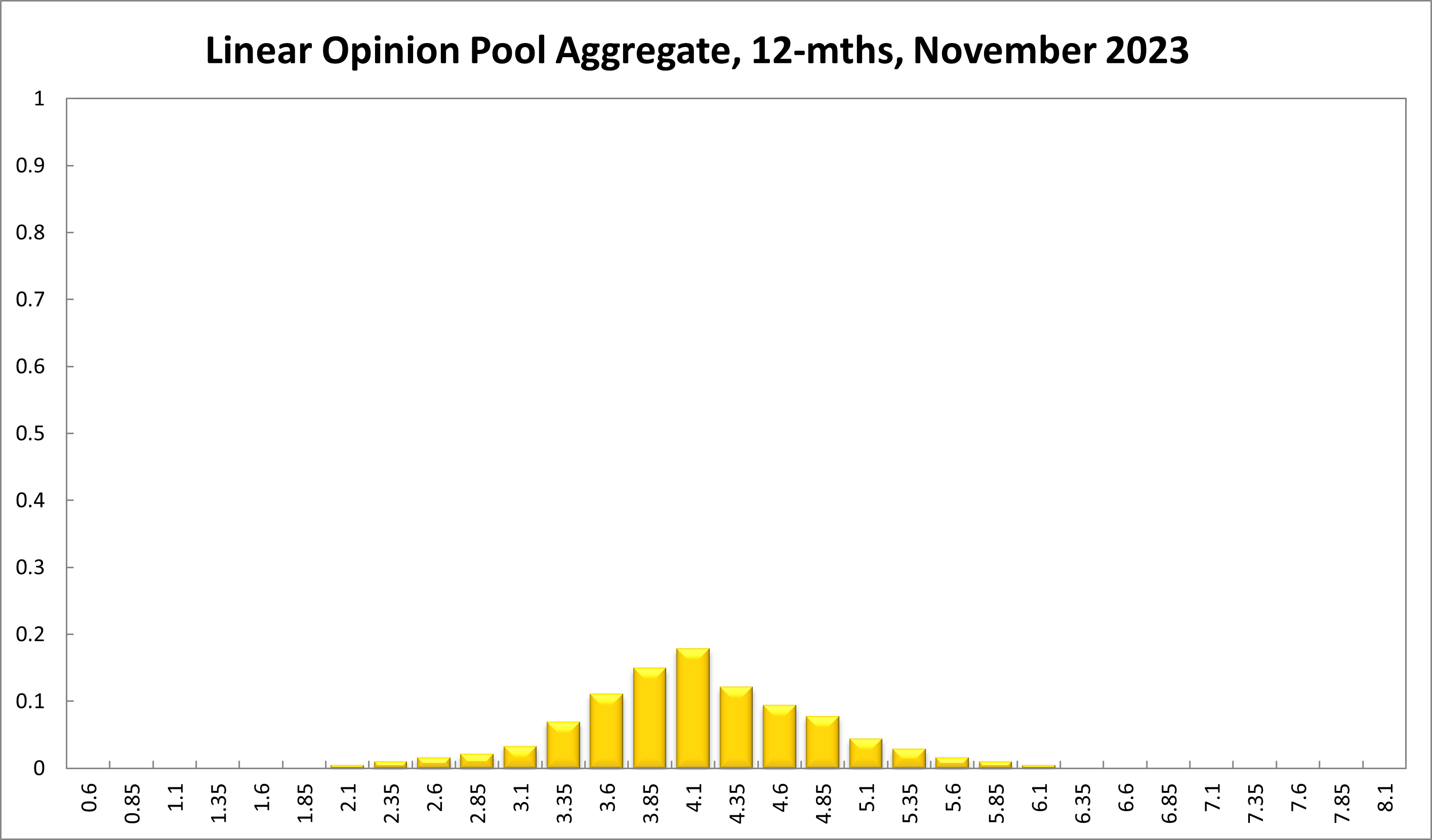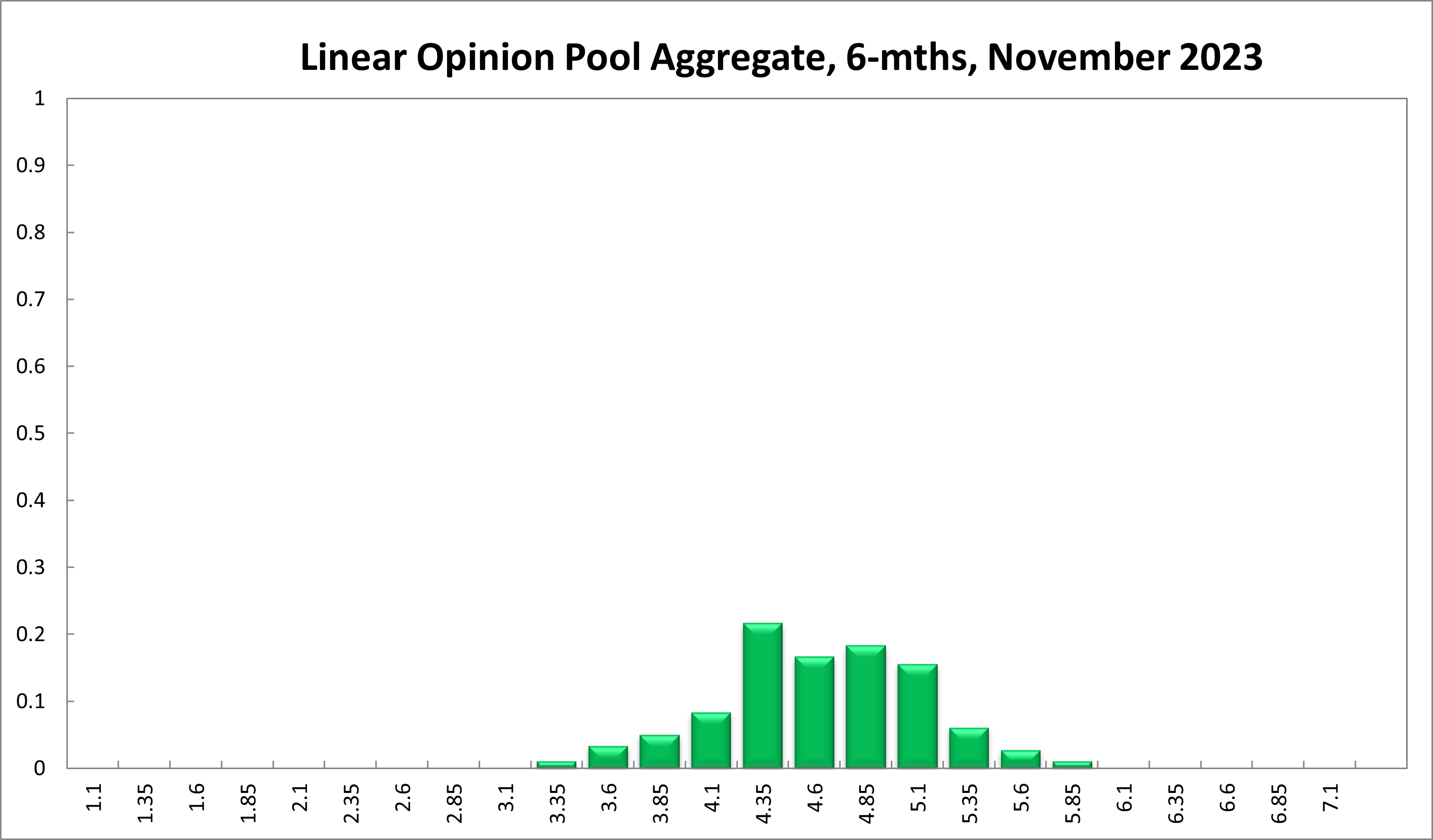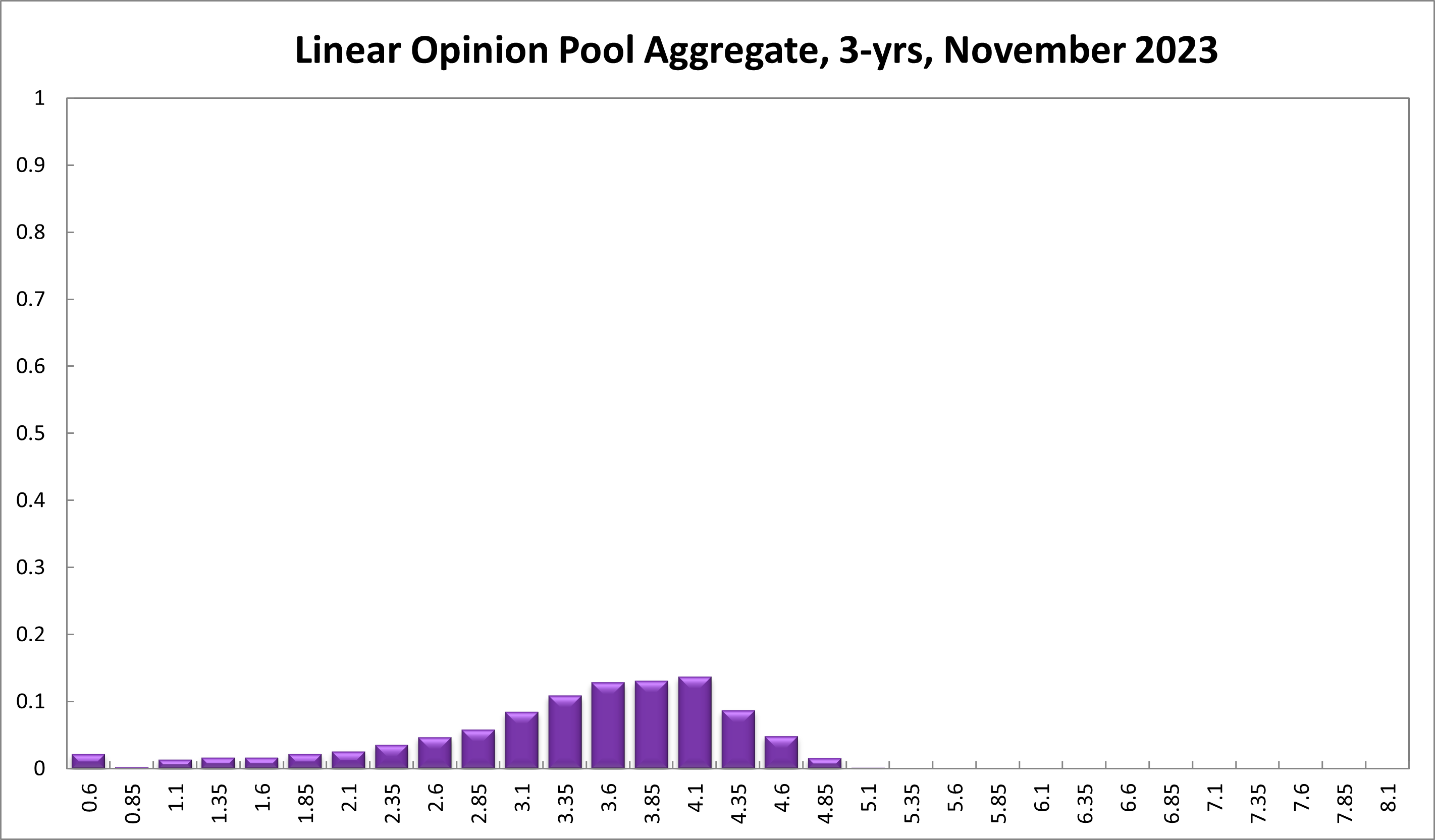Aggregate
Shadow Board Recommends Rate Hike to Contain Inflation
Most recently, the monthly consumer price index (CPI) rose 5.6% in the twelve months to September 2023, while the quarterly inflation rate fell to 5.4% year-on-year in Q3, the lowest since the first quarter of 2022. The RBA’s Trimmed Mean CPI, which excludes the most volatile items, grew by 5.2% year-on-year, still well above the RBA’s target band of 2-3%. The labour market remains remarkably resilient but business confidence is softening further and the global economy, while surprising on the upside, faces considerable challenges, especially geopolitical. On balance, the RBA Shadow Board recommends increasing the cash rate in November. It attaches a 62% probability that the overnight rate should increase to a level above 4.10%, a 37% probability that the overnight rate should remain on hold, and a 2% probability that the overnight rate should be lower.
The official Australian seasonally adjusted unemployment rate, at 3.6% in September, was lower than expected, coinciding with a slight drop in the labour force participation rate, from 67% to 66.7%. Job vacancies fell for the fifth consecutive month; job advertisements, too, contracted, albeit only slightly, by 0.1% month-over-month. Youth unemployment and underemployment have both fallen recently. The labour market is continuing to prove remarkably resilient, despite recent monetary tightening. Of key interest to the RBA will be the latest figures on wage growth, to be released in mid-November. In Q2, the wage price index grew by 3.6% year-on-year, less than the official forecast and well below inflation, but there are signs this number will be higher in Q3.
The Australian dollar traded in a relatively narrow corridor between 63 and 64.5 US¢. Yields on Australian 10-year government bonds continued to rise, finishing this week slightly above 4.7%. The shapes of the yield curves have changed somewhat over the past few weeks. While the yield curve in short-term maturities (2y vs 1yr) remains inverted, the yield curve in medium-term vs short-term maturities (5y vs 2y) is now flat and the one in long-term vs short-term maturities is displaying normal convexity. This rotation of yield curves points to the markets’ expectation that interest rates are unlikely to return to the historic lows any time soon. The Australian share market ended the month of October slightly lower, with the S&P/ASX 200 stock index finding support above 6,800.
Consumer confidence, while still in “pessimistic territory” hit a six-month high, with the Westpac-Melbourne Institute Consumer Sentiment Index rising 2.9% in October, to 82. Retail sales expanded 0.9% month-over-month in September, or 2.0% year-on-year, which is still less than half the long-run average. Business confidence in October took a further hit: the Judo Bank Manufacturing PMI, the Composite PMI and the Services PMI all dropped, from 48.7 to 48.2, from 51.5 to 47.6, and from 51.8 to 47.9, respectively. The capacity utilisation rate dropped from 85.07% to 84.16% in September. The Composite Leading Indicator edged down, to 98.54 points (also in September), the lowest in more than three years. All these numbers are suggestive of a business sector that is gradually softening.
The world economy has been outperforming most forecasts. Rather than slipping into recession in 2023, as widely predicted, the US economy, for example, grew by an annualised rate of 4.9%. China’s economy has weakened on the back of a bursting property bubble, and some European economies, foremost Germany, are flagging but the outlook for emerging market and developing economies is significantly more positive. In its October World Economic Outlook, the International Monetary Fund stated that the baseline forecast for global growth is 3.0% in 2023 and 2.9% in 2024, still below the 2000-19 average of 3.8%. Global inflation is projected to decline steadily, from 8.7% in 2022 to 6.9% in 2023 and 5.8% in 2024. Whilst the global economy appears to be avoiding a major downturn and the threat from inflation is limited, the Fund highlights the risk of “growing regional divergences” and “little margin for policy error”. Clearly, the Middle East conflict, in addition to the Ukraine-Russia war and Chinese-US tensions, are making the global economy more vulnerable and thus the outlook more uncertain.
The Shadow Board’s assessment of monetary policy clearly shifted in favour of an interest rate increase. The Board attaches a 62% probability that this is the appropriate policy, while only attaching a 37% probability to keeping the overnight rate on hold and a mere 2% to a rate reduction.
The probabilities at longer horizons are as follows: 6 months out, the confidence that the cash rate should remain at the current setting of 4.10% equals 22%; the probability attached to the appropriateness of an interest rate decrease equals 18%, while the probability attached to a required increase equals 61%. The mode recommendation at this horizon is 4.35%.
One year out, the Shadow Board members’ confidence that the appropriate cash rate should remain at the current level of 4.10%, equals 18%. The confidence in a required cash rate decrease, to below 4.10% equals 42%, and its confidence in a required cash rate increase, to above 4.10%, is 40%. Three years out, the Shadow Board attaches a 14% probability that the overnight rate should equal 4.10%, a 71% probability that a lower overnight rate is optimal and a 15% probability that a rate higher than 4.10% is optimal.
The range of the probability distribution for the current recommendation remains relatively narrow, extending from 3.85% to 4.85%. For the 6-month horizon the range, extending from 3.35% to 5.85%, simply shifted up 25 bps. The range for the 12-month horizon, at 2.10%-6.10%, widened by 25bps, whereas the range of the 3-year horizon remained unchanged at 0.60%-4.85%.




Updated: 6 July 2024/Responsible Officer: Crawford Engagement/Page Contact: CAMA admin










